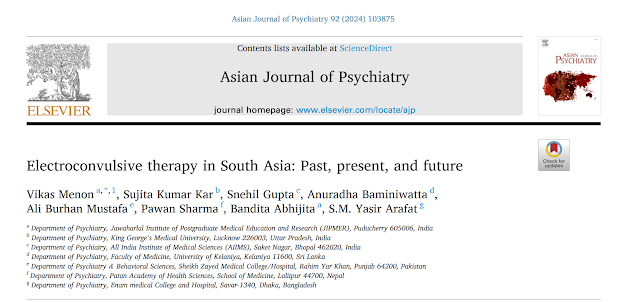Amplitude-determined seizure-threshold, electric field modeling, and electroconvulsive therapy antidepressant and cognitive outcomes. Abbott CC, Miller J, Farrar D, Argyelan M, Lloyd M, Squillaci T, Kimbrell B, Ryman S, Jones TR, Upston J, Quinn DK, Peterchev AV, Erhardt E, Datta A, McClintock SM, Deng ZD. Neuropsychopharmacology. 2024 Jan 11. doi: 10.1038/s41386-023-01780-4. Online ahead of print. PMID: 38212442 The abstract is copied below: Electroconvulsive therapy (ECT) pulse amplitude, which dictates the induced electric field (E-field) magnitude in the brain, is presently fixed at 800 or 900 milliamperes (mA) without clinical or scientific rationale. We have previously demonstrated that increased E-field strength improves ECT's antidepressant effect but worsens cognitive outcomes. Amplitude-determined seizure titration may reduce the E-field variability relative to fixed amplitude ECT. In this investigation, we assessed the relationships among amplitude-determined seizure-t...














